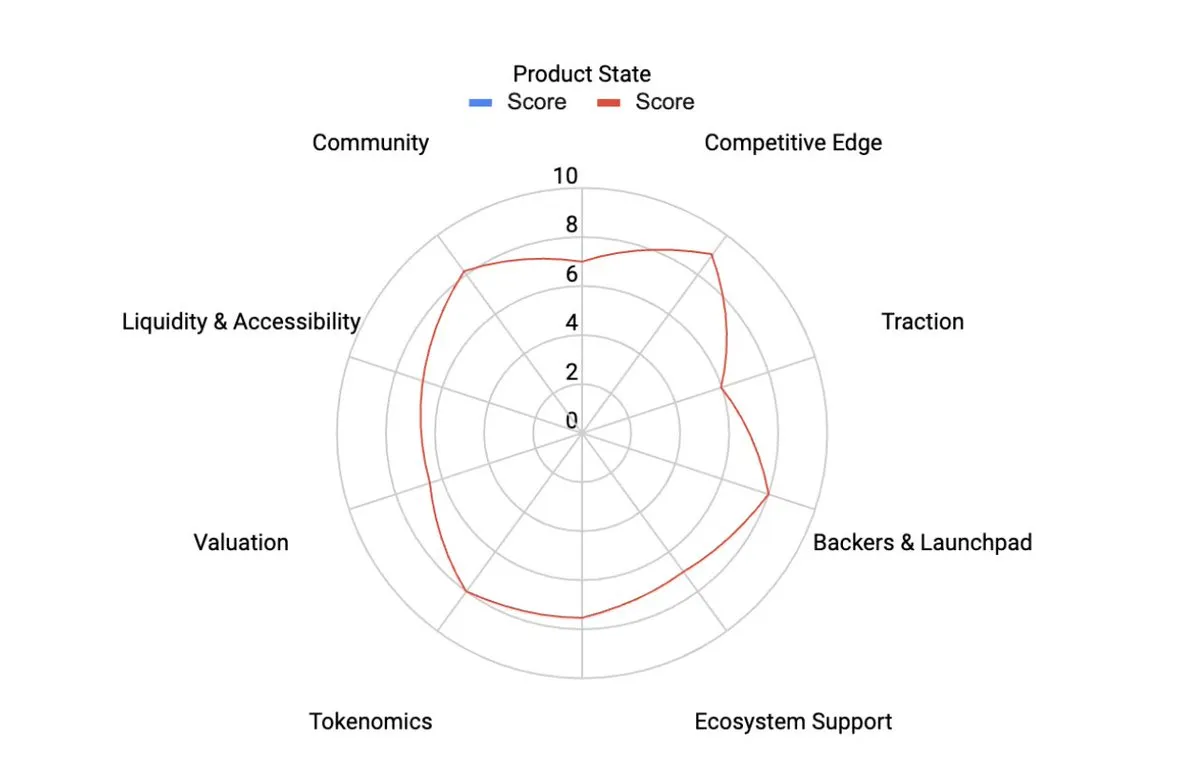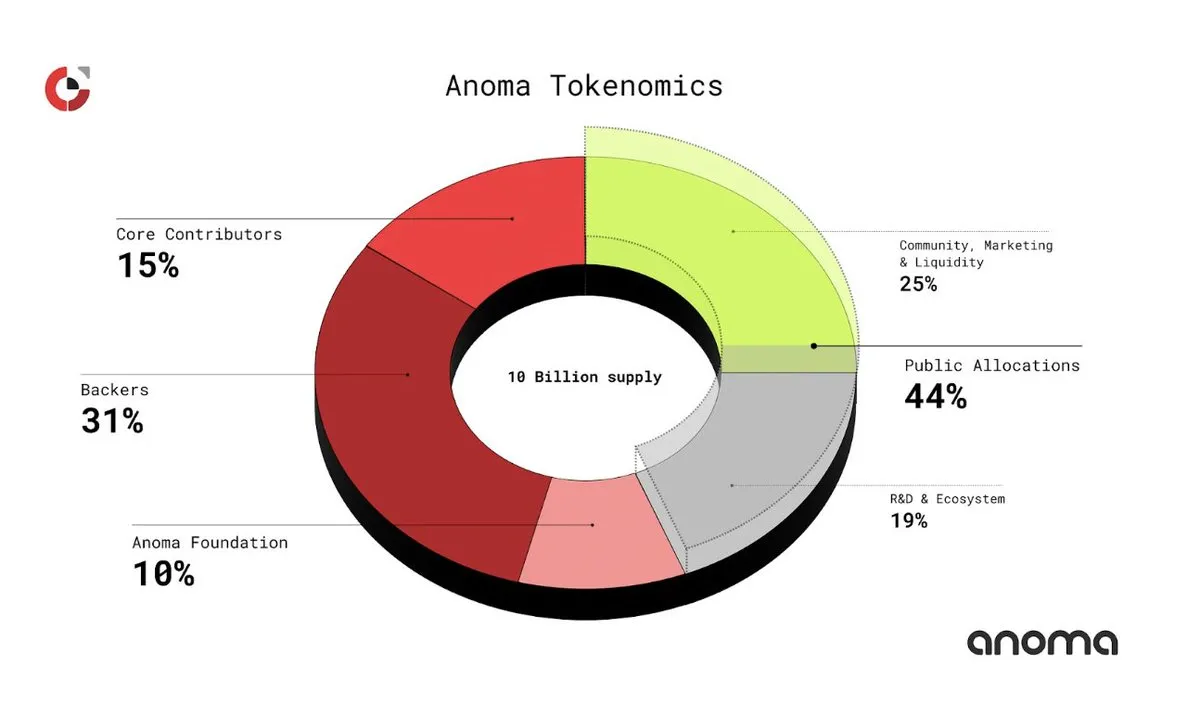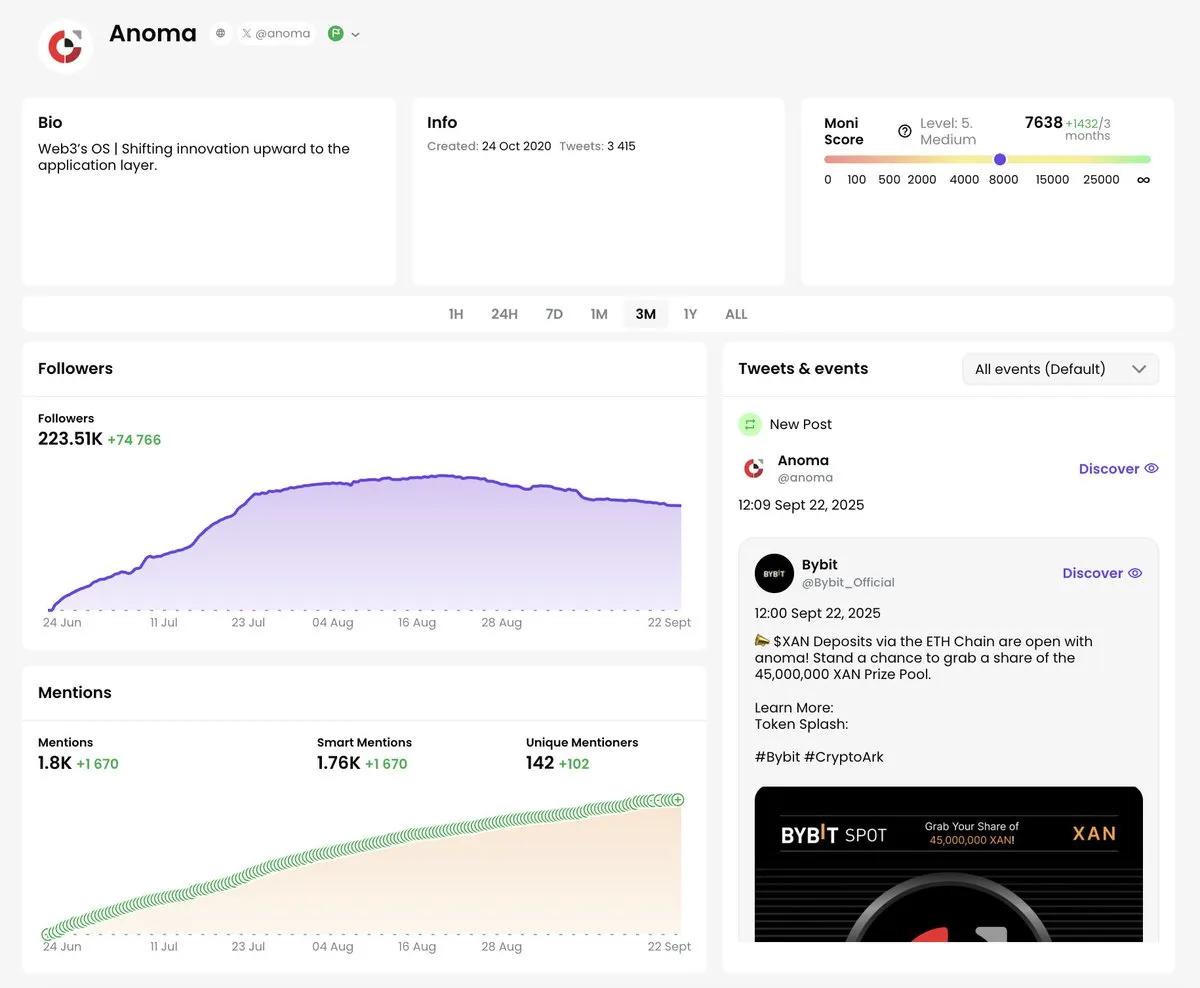Original Title: 《Anoma Pre-TGE Analysis》
Translation by: Hu Tao, ChainCatcher
Score Details
Product: 7.25
Token Economics: 7.42
Community: 8.20
Liquidity and Accessibility: NA (Before TGE)
Market: +0.5 → Slightly positive score due to current narrative momentum (Intent + ZK Privacy is a hot topic for 2025), but overall market conditions are neutral, and the competitive space is crowded.
Weighted Final Score: 8.12
Without this narrative-driven market momentum, Anoma's score would be 7.62—still strong for a pre-mainnet project, but its execution capabilities remain to be proven.
Anoma's core idea is that the scaling of cryptocurrency is not achieved by building isolated applications, but through cross-chain coordination of intent. The score highlights where its beliefs lie and where delivery remains crucial.

Muur Framework
The Muur framework categorizes projects into five weighted categories: Product, Token Economics, Community, Liquidity, and Market Environment.
Scores are weighted by importance, providing us not only with raw metrics but also with a belief-adjusted map to show the current reality versus what still needs to happen.
For Anoma, the strongest signals come from its competitive advantages (9/10) and ecosystem support (7/10), along with a healthy community influence. Risks are primarily focused on the clarity of token economics (still pre-token generation) and the proof of scalable execution capabilities.
Anoma's Core Argument
Essentially, Anoma is not just a DEX or MEV solution; it is a coordinated operating system.
Intent → Users specify the outcome they want (e.g., trading, borrowing, hedging) but do not specify how it happens.
Solver Network → Competing participants solve these intents, finding the best cross-chain execution paths.
Atomic Settlement → Execution guarantees that all steps across chains are either fully completed or not completed at all.
ZK Privacy → Zero-knowledge proofs ensure users control their data and strategies.
The end result is: Anoma aims to be broader than UniswapX or CoW Swap (limited to trading), deeper than SUAVE (MEV infrastructure), and more universal than Espresso (ordering). If successful, it will become the coordination layer for cryptocurrency.
XAN: Token Fundamentals and Positioning
Anoma's token XAN will serve as the coordinating asset for the system.

Utility → Coordination fees, staking, governance. Unlike fee-burning models, there is currently no clearly defined funding pool.
Distribution → Maximum supply of 10 billion. Supporters 31%, Community 25%, R&D 19%, Contributors 15%, Foundation 10%. Closely tied to a long cliff (12 months) and linear vesting (36 months).
Valuation → Previous private round (2023) raised $25 million, with an FDV of $1 billion. External speculation places the FDV at TGE between $500 million and $1 billion.
Liquidity → Before TGE → Not yet scored.
The design tends to balance: reasonable community allocation, but the supporter share remains quite substantial. The key is whether the community's appeal can translate into sustained token demand post-TGE.
Product Strength
Stage: Gamified public testnet will launch on July 15, 2025. The first mainnet confirmation on Ethereum is expected in Q4 2025.
Competitive Advantage: Score 9/10—an intent-centric operating system with multi-chain atomic settlement, solver network, and zero-knowledge proof privacy features. Currently, there are no direct competitors that can cover this scope.
Traction: Testnet activity indicates high developer engagement driven by incentives. The testnet is still in the pre-mainnet phase, so signals are in early stages and partially gamified.
Supporters: $26 million (2021: Polychain, Electric, Delphi, Coinbase), $25 million (2023: CMCC, FDV $1 billion), $2.5 million community round (January 2025). Strong long-term capital support.
Ecosystem: The first batch of "Intents Initiates" projects has launched, including 15 projects (Orda, Epoch, Fairblock, Mycel). The Ethereum-first strategy allows for widespread adoption in the short term.
Community Engagement
Anoma's community score is as high as 8.2/10.
Followers: ~228K (September 2025).
Engagement: Tokenomics post: 1.5K likes / 17.7K views. The release of Shrimpers NFT (September 9, 2025) expanded meme appeal and retail awareness.
Signals: Clear signs of grassroots narrative strength.
This indicates that Anoma has successfully attracted the attention of retail users and intellectuals, a rare balance for an infrastructure project.

Market Setting
Narrative: Intent + ZK Privacy is a hot topic for 2025.
Macro: Fear and Greed Index around 54 → Neutral. Bitcoin's dominance remains high.
Competition: A crowded field (UniswapX, CoW, SUAVE, Espresso), but Anoma's positioning as an operating system-level coordination layer makes its scope unique.
The market category contributed +0.5 to the total score, reflecting narrative momentum. Without the market category, Anoma's score would be 7.62, highlighting that execution, rather than hype, ultimately determines its ranking.
Opportunities and Risks
Opportunities
Launching Ethereum-first can access the largest pools of development and liquidity.
Intent initiators can sow the seeds for a lasting ecosystem of solver applications and integrations.
ZK privacy integration will distinguish Anoma from other intent protocols.
Risks
Traction quality → Current signals are incentive-driven; organic demand must be proven post-mainnet.
Token Economics → No clear absorption mechanism yet; demand drivers may lag behind supply unlocks.
Execution → Achieving atomic settlement + privacy at scale is technically complex.
Conclusion
Anoma's Muur score reaches 8.12, making it one of the most compelling cases for 2025. Its argument is bold: cryptocurrency needs an intent-centric operating system rather than isolated applications or infrastructure. With numerous supporters, a vibrant community, and clear competitive advantages.
However, the project is still in the pre-mainnet phase. This means its development relies heavily on incentive mechanisms, the token economics have yet to be tested, and the most challenging parts (atomic cross-chain settlement + large-scale privacy) remain to be validated.
Currently, Anoma's valuation is based on its narrative strength and execution potential. After TGE, the real test will be whether developer adoption and the solver network can provide sufficient liquidity and coordination depth to validate its ambitions as an operating system.
This is a project that requires close tracking and cautious accumulation, a rare case where vision, community, and market timing align, but the delivery clock has just begun.
免责声明:本文章仅代表作者个人观点,不代表本平台的立场和观点。本文章仅供信息分享,不构成对任何人的任何投资建议。用户与作者之间的任何争议,与本平台无关。如网页中刊载的文章或图片涉及侵权,请提供相关的权利证明和身份证明发送邮件到support@aicoin.com,本平台相关工作人员将会进行核查。




